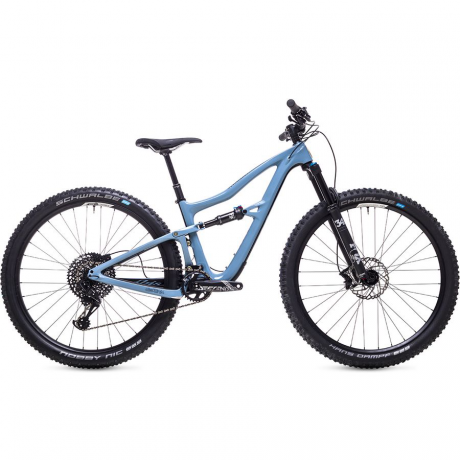Ibis Ripley GX Eagle Mountain Bike for Sale, Reviews, Deals and Guides
$5399.00
$3,239.40
$4,859.10

Here at Competitive Cyclist, we think that most recipes that call for short travel and 29-inch wheels result in a tasty dose of trail fun, and the fourth-generation of Ibis’ Ripley GX Eagle Complete Mountain Bike drives the point home, satiating our appetite for good times with its capable and playful demeanor. This firecracker of a bike takes its racy XC roots, and goes for the modern longer-slacker-steeper geometry treatment to bring it in the mix with other trail bikes of today, but without going too overboard. We’ve seen enough steeds stretch themselves out to the max, becoming all-too plush and sluggish, so we were pleased to see that the head tube on the Ripley was only tweaked by a degree, and the bulk of the changes took place in the rear end, only elevating the steeds playful characteristics and quick-rolling power.
The Ripley 4’s major update meant that Ibis’ engineers could start from the ground up, and they chose to start with the heart-and-center of the bike, updating the dual-eccentrics used in the past to a new design based on the Ripmo, which still holds DW-Link suspension tucked neatly in the front triangle, but without as much weight, and with a huge boost in stiffness. This change in the frame’s chassis allows massive weight savings of over a half-pound on the frame alone, giving your all-mountain machine a little more pep in its step when you’re pushing up grueling climbs, and a more nimble feel when you’re flicking it around tight switchbacks.
Weight savings aside, one of the biggest benefits we see with the drop of the double-eccentric design is extra room in the seat-tube, which enables taller riders to run dropper posts up to 185mm. This long-dropper length lets Ibis’ engineers carry forward with even more geometry tweaks, like an extra-low stan dover height, so you can pick your frame based on reach, eliminating seat-tube size from your list of limiting factors on your new-bike hunt.
Changes didn’t stop with the eccentrics though, the Ripley has been tweaked all over, including a one-degree slacker head tube for a stretched wheelbase that adds a bit of confidence to the descents, and a three-degree steeper seat tube angle that keeps you in the center of your cockpit perched nicely for climbs. On the rear end of things, Ibis shortened the chainstays by a whopping 12-millimeters to boost stiffness, and make the suspension a bit more progressive, without letting go of the lively pedaling characteristics of the previous Ripley.
Specifications
Full Reviews

September 8, 2020

February 22, 2020

November 26, 2019

October 19, 2019

October 3, 2019

October 1, 2019



